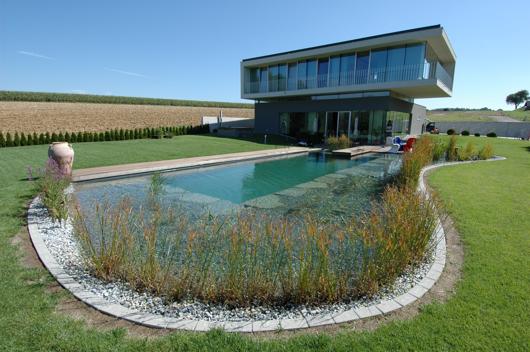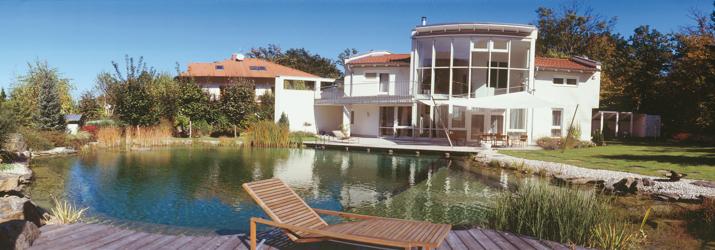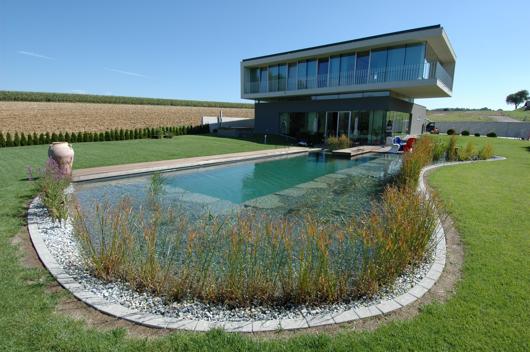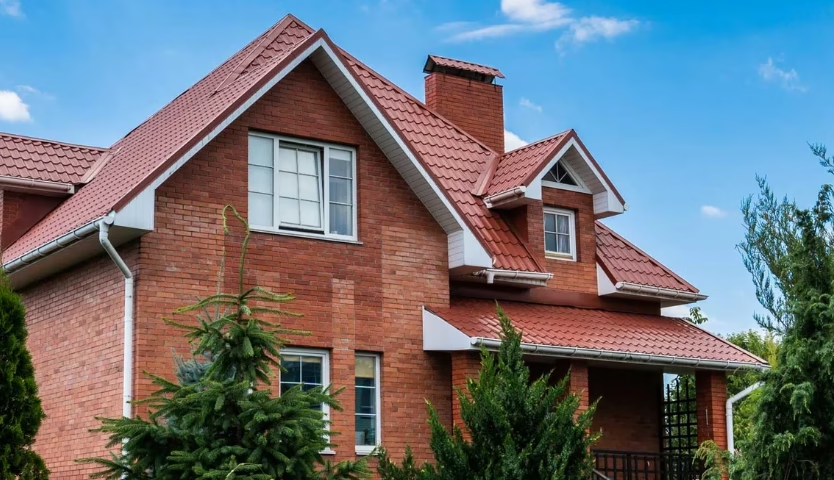Natural swimming pools & how they work
Bio pools are an environmentally-friendly alternative to traditional swimming pools which bridge the line between being a swimming pool and a private lagoon But chlorine, water heating systems and litres of wastewater are not what you’d call sustainable. Laboratory studies show that repeat exposure to chlorine in air can affect the immune system, the blood, the heart, and the respiratory system of animals.
Chlorine also causes environmental harm at low levels and is especially harmful to organisms living in water and in soil. Possible health impacts aside, traditional swimming pools are energy and water hungry luxuries which add nothing to surrounding flora and fauna.
Bio pools are an environmentally friendly alternative to traditional swimming pools which bridge the line between being a swimming pool and a private lagoon. But unlike mechanised traditional swimming pools with water regulated to inhibit life forming, bio pools are essentially purpose built, self-regulating, mini ecosystems.
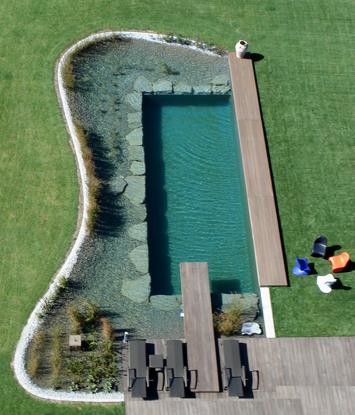
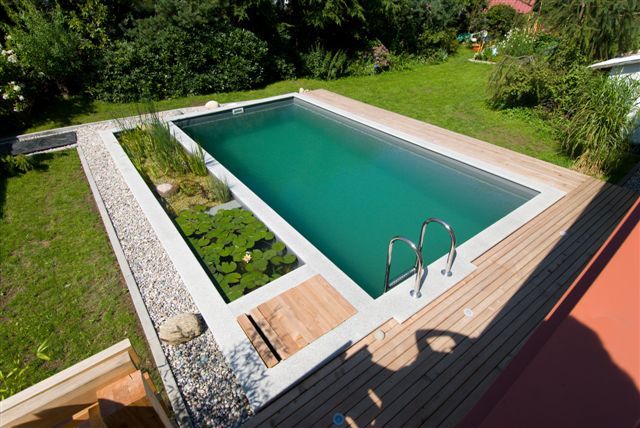
Converted swimming pool
How do bio pools work?
Bio pools are natural swimming pools. Rather than relying on chemicals to keep them clean, they either use ecological systems (plants) to foster the development of living systems and organisms or manipulate biological stress points to create naturally pure water, like mountain lakes.
The classic bio pool works by having two zones: a central swimming area and a shallower surrounding area, with plants specially chosen to purify the water. Plants purify water by consuming excess nutrients and de-acidifying it by removing carbon dioxide. Reeds, which are the long stalk like plants generally visible by the sides of lakes or estuaries, make an ideal choice with different varieties suited to warmer or cooler climates.
Some bio pools have separate swimming and purifying areas, while others integrate swimming and vegetated zones and resemble natural swimming holes rather than man-made objects. The latest concept even makes it possible to have no plants at all, through the use of bio filters either inside, or external to the pool.
New generation water filters
The new generation of natural water filters, allow water to be purified on a micro-biological basis, to a level which has been certified for use in public swimming in Europe and the US. This advanced filter technology draws water into its core from below a gravel surface at the bottom of the pool and can be powered by submerged, low voltage (12 Volt) pumps.
The filters work by removing nutrients from the water via a phosphorus or synthetic filter which deprives harmful micro-organisms of their food source. The end result is water similar to that in a chlorinated pool while the absence of chemicals means that it is good enough to drink!
This style of filtration also means that you don’t need any pump housing or winter maintenance. They are also an ideal choice for traditional swimming pool conversions, as existing filtration infrastructure can be leveraged.
Water Gardens
Including a water garden within the swimming pool is the other primary mechanism by which a critical mass of water purifying micro-organisms can be nurtured. Just like man made filtration networks, plant roots absorb nutrients from the water that micro-organisms release during the decomposition of germs and other natural substances, which would otherwise become harmful to people swimming in the water.
And with no need for any further filtration systems, water gardens are the most sustainable model for bio pools. Water Gardens can be as simple as a single species of reed or intricate water beds of lilies, lotus flowers and other water grass species, however be prepared for visiting birdlife, and other animals in rural areas who will not be able to resist your pristine water hole.
Pool conversions
With the tide of sustainability finally starting to turn in Australia, companies like the German- founded GartenART, which have been designing and building natural pools since 1995 are anticipating a boon in demand for swimming pool conversions as, according to founder Ralf Schimel, “Australia, with its unique climates and unique wildlife, needs uniquely designed natural pools.”
With electricity prices on a seemingly upward trend too, there has never been a better time for ditching the electricity hungry, not to mention load and bulky and filters which feature in so many suburban backyards around the country.
Learn more about sustainable design and building
This article was ritten and provided by the Light Home, an informative hub for designers, builders and renovators who have discovered the benefits of using lightweight, sustainable building materials. Go to the Light Home website for more green building, design and decoration tips.



